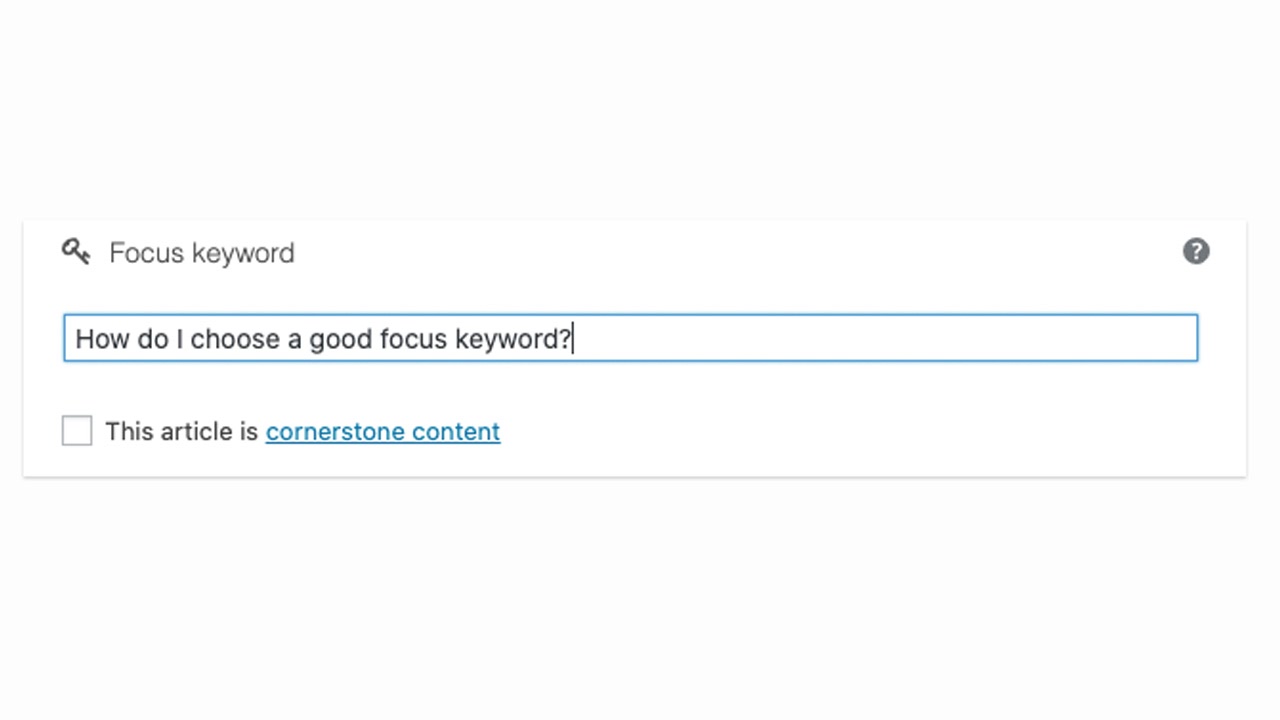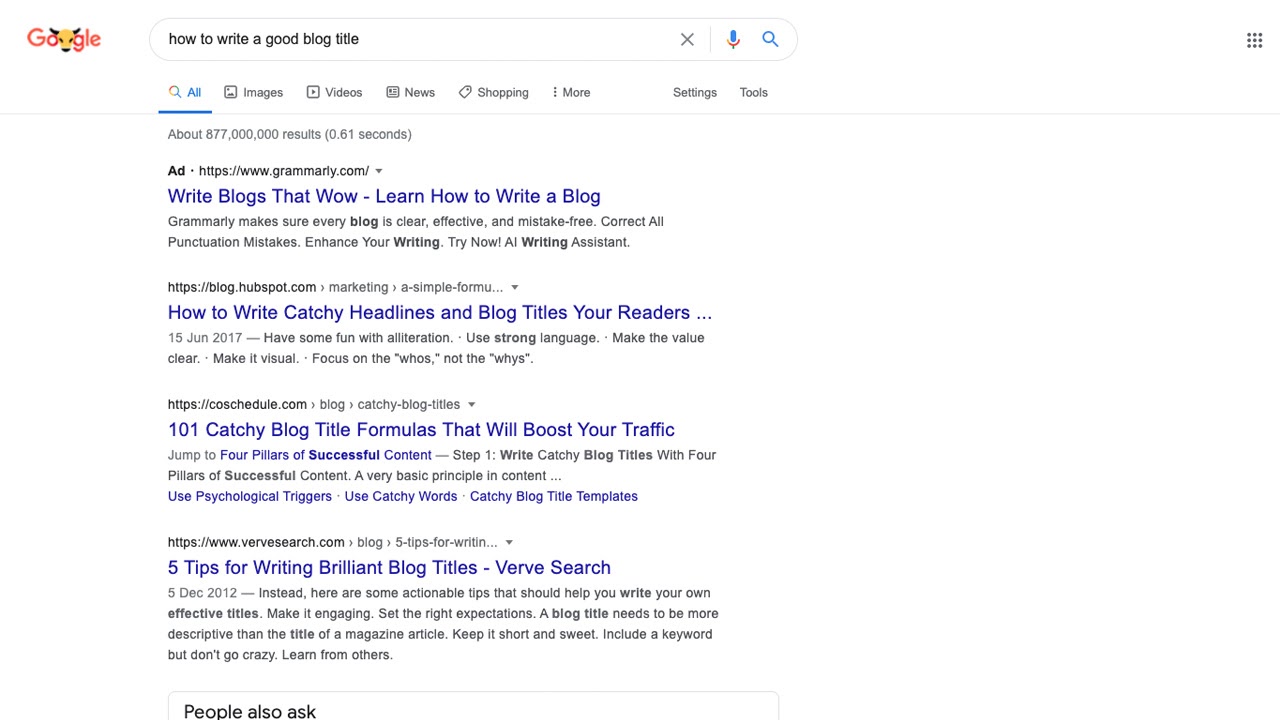How to write a blog post with optimal SEO
Tips and tricks to move to the top of Google’s results

An enormous amount of content is published on the internet every day, so if you want to attract readers to your blog, you’ll need more than the best website builders and a topic to talk about—you’ll also need to understand SEO, or search engine optimization, as it's a key part of how to write a blog post.
SEO is the process of tailoring your blog post to make it more visible on search engines such as Google and Bing. These search engines analyze web pages for certain indicators of content and quality. If you learn how this works, you can implement a few simple tricks to move your posts higher up in the search results.
In this feature, we show you how to write a blog post with SEO in mind, in order to bring in more readers - you might also want to peruse the best free blogging sites, should you be looking for a new home for your writing.
How to write a blog post - Step 1: Have a clear purpose

Before you write your post, think about what its purpose is. There should be one clear, specific topic that your article is about. Consider what kind of person you want to read your article, what they should get out of it, and what search terms they might use if they were looking for it. Answering these questions will help you write the article and implement the following steps.
Step 2: Structure your article for readability
Search engines can tell how readable an article is—that is, how easy it is for someone to read through and understand its points. A major aspect of this is giving your writing a clear structure. There should be an introduction, a main body of text, and a conclusion.
It should also be divided into paragraphs, preferably with section headers. Short paragraphs work better, as they are easier to scan for information, especially on mobile phone screens. Similarly, short sentences are preferred to long, complicated ones.
Try to use transition words, like “similarly” and “and,” to connect content points.
Sign up to get the BEST of Tom's Guide direct to your inbox.
Get instant access to breaking news, the hottest reviews, great deals and helpful tips.
Step 3: Use a strong focus keyword

Many blogging sites let you set a focus keyword, which is the main search term that you want leading to the post. Choose one that’s specific to the post and not used by any other posts on your website; after all, you don’t want your pages to compete with each other.
A useful trick is to use a long-tail keyword, which is a longer term, and often a question. Make sure to include your focus keyword throughout your article. For example, the long-tail keyword of this article is, “how to write a blog post,” which we used in the title, the introduction, and this very sentence.
Step 4: Use topic tags
Besides your focus keywords, you can add tags to your blog posts. These are like category titles, which organize all the content on your website. Think of them like the index words in a book—readers interested in a topic can find all your articles about it using the tag.
If an article covers several topics, you can include multiple tags. However, don’t use tags too similar to each other, like “SEO” and “Search Engine Optimization.” Search engines and readers are both clever enough to interpret this as you trying to trick them by listing the same content multiple times.
It’s useful to have a set list of tags for your site, and restrict yourself to that list.
Step 5: Have an effective title

Choosing your title carefully is important, because not only do search engines use the title to determine the article’s content, but it’s also the first thing that viewers see in the search results - so it plays a major role in their decision to click through.
It’s useful to include your focus keyword in the title. Google cuts titles off after around 60 characters, though, so make sure your keyword comes before that point. It’s also a good idea to use emotive power words. Think about how words like “easy,” “spectacular,” and “thought-provoking” might grab a reader’s attention.
Step 6: Optimize the meta description
The meta description is a summary of your article’s content, and it appears below the title in search engine results. In an engaging and concise way, summarize why readers should click through. Ideally, your meta description should be limited to 155 characters, and include the focus keyword.
Recently, Google has started displaying parts of the article relevant to the searched terms underneath titles, rather than the meta description, so some SEO experts say that the meta description isn’t as useful as it used to be. But it’s still worth the short amount of time that it takes to write it.
Step 7: Use images effectively

Since the human mind often finds it easier to parse visually appealing content, adding images to illustrate and help explain your point makes your articles more engaging. Consequently, they’ll be placed higher in search results. You can also embed videos for extra engagement.
It’s important to add alt text to your images. This should be a concise, specific description of the image. It tells the search engine what the image shows, and helps it rank in image results pages. Also, the image can be described to users with slow internet connections or screen readers.
Step 8: Link to related content
In the introduction to this feature, we linked to another article on Tom’s Guide. There are two reasons to do this. First, it allows readers to discover other content on the site that may be relevant to them. The other reason is SEO-related.
Search engines can tell if an article is linked to and from other web pages. To the algorithm, this makes the article seem more valid and relevant, so it will be moved up in the search results. It’s useful to include internal links wherever possible in your blog posts—your pages will support each other’s SEO scores.
Summary
SEO involves a certain amount of technical understanding of keywords, meta descriptions, image alt text, and how search engine algorithms interpret all this data. However, most of it is about simple readability. The more engaging your content is to readers, the higher your search engine ranking will be.
If you follow all the tips and tricks that we’ve listed here on how to write a blog post, you should be able to significantly improve your blog post’s standing in the search results, and attract large numbers of new readers in no time.
Further reading on website builders
For further advice, see our feature on the biggest WordPress website mistakes, and how to fix them. If you go with WordPress for your new site via the best website builders for WordPress, make sure you sign up to the best WordPress hosting offered by the best web hosting services, to ensure you've got the best chance to succeed.
Kieron Moore is a freelance writer based in Manchester, England. He contributes to Future sites including TechRadar and Creative Bloq, focusing on subjects including creative software, video editing, and streaming services. This work draws on his experience as an independent filmmaker and an independent TV watcher. He can be found on Twitter at @KieronMoore, usually when he’s meant to be writing.

